Welcome to the second edition of Higher Ed Conversations in Black.
The edition is framed by Aireale Joi Rodgers, Pullias Center Research Assistant and PhD student in the Urban Education Policy program at USC Rossier School of Education.
At the Crossroads of “Normal” and Black Liberation in Higher Education
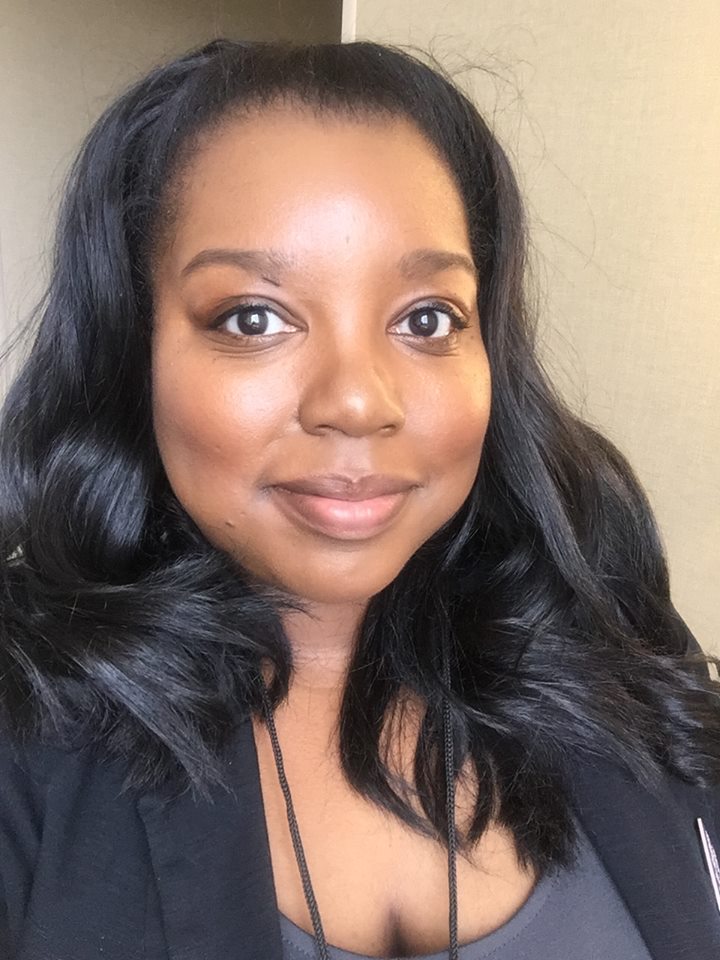 On November 7, 2020, what felt like the longest election season — during the longest year ever — finally came to an end. My phone buzzed with messages from loved ones, exclaiming that “We did it!” Biden and Harris’ victory arguably marked an end to a presidential administration that weaponized fear and ignorance to execute a policy agenda that actively disenfranchised Black, Indigenous, and People of Color (BIPOC).
On November 7, 2020, what felt like the longest election season — during the longest year ever — finally came to an end. My phone buzzed with messages from loved ones, exclaiming that “We did it!” Biden and Harris’ victory arguably marked an end to a presidential administration that weaponized fear and ignorance to execute a policy agenda that actively disenfranchised Black, Indigenous, and People of Color (BIPOC).
Now that we can collectively come up for air after that contentious election cycle, many people are asking: When will things go back to normal?
As we enter yet another month of wading through the tumultuous waters of a global pandemic that has disproportionately ravaged Communities of Color and claimed the lives of more than 200,000 people in the U.S., the desire for normalcy makes sense. The nostalgia of the “good ol’ times” seems alluring. But, when we pause and question our conceptualizations of normalcy, the act of returning to normal becomes a direct threat to the survival and wellbeing of Black folks in the U.S.
Akin to when Obama was elected president, with Biden and Harris heading to the White House, there seems to be a sense of relief that overt racism and antiblackness will no longer have a place in our nation’s highest office. But history has taught us that radical change will require much more than new occupants in the White House. If we think back to a time before November 2016, Black children were routinely deprived of quality education. Black life was explicitly devalued; so much so that police officers gunned down Mike Brown, Rekia Boyd, Tamir Rice, and countless others without consequence. Black women and genderqueer folks carried the brunt of liberation work without receiving recognition or compensation. And, universities have continuously exploited the brilliance and labor of Black people to further capitalist gains while systematically excluding us from higher education. In other words, normal has been synonymous with antiblackness throughout U.S. history.
Building on our inaugural issue, this volume of Higher Ed Conversations in Black moves beyond the notion of normalcy to imaginatively consider what is next for the United States and the field of higher education in our current socio-political context. From the dispersal and displacement of Communities of Color in metropolitan areas to the persistent underfunding and devaluing of Minority Serving Institutions, such as Historically Black Colleges and Universities, postsecondary institutions have been complicit in normalizing antiblackness through a legacy of exclusion, disenfranchisement, and exploitation. This norm of pervasive antiblackness in higher education has been central to perpetuating and rationalizing the racism and misogynoir we observe in the world. If we are to move beyond this, we must hold the field of higher education accountable in building the type of academy Black people deserve. This issue considers how administrators, faculty, researchers, and policymakers can, in partnership with students, reconstruct and radically reimagine the praxis of higher education in ways that explicitly value Black life.
The past provides an important historical lens through which we can interpret the present and reimagine the future. I deeply believe that our ancestors are not calling on us to desire the past. Instead, we must use their lessons of resistance and transgression alongside the fire we feel in the wake of this election to organize and create something new. This is an important historical moment for our field — a crossroad where higher education scholars and practitioners can choose to pursue liberation over the false security of normalcy. Walidah Imarisha reminds us, “Once the imagination is unshackled, liberation is limitless.” Black people thriving in a fundamentally antiblack world is evidence that other worlds are possible, and it is up to us to build them.
For our second issue, we asked higher education thought leaders to reflect on the question: What is next for the United States and for the field of higher education in our current socio-political context?
– Aireale Joi Rodgers
Contributors
Darnell Cole
Co-Director, Research Center for Education, Identity and Social Justice, Associate Professor of Higher Education and Education Psychology, College Student Experience Scholar, Provocateur
Eddie Cole
Historian of Higher Education, Author of The Campus Color Line: College Presidents and the Struggle for Black Freedom
Felecia Commodore
HBCU, Leadership, and Governance Scholar / Assistant Professor / Black Feminist
Freeman Hrabowski, III
UMBC President, Civil Rights Leader, Past Chair of President Obama’s Advisory Commission on Educational Excellence for African Americans
Wendy Osefo
Equity Scholar, Political Commentator, Award-Winning Academic, Trailblazer
Antar Tichavakunda
Higher Education Scholar Masquerading as a Sociologist
click contributor names for bios
What is next for our country and for the field of higher education in our current socio-political context?
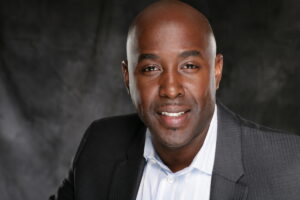 Darnell Cole: As we take a collective sigh of relief that several highly efficacious vaccines are en route to the FDA for approval and that we don’t have to suffer through another four agonizing years of the Trump administration occupying the White House, we cannot romanticize what was once the normal functioning within post-secondary institutions. While amid institutional transformation, we must be critically reflective, visionary, and bold as we focus on the following questions of deep consequence. First, if the entire ‘world’ can protest in the streets and chant ‘Black Lives Matter’ in the summer of 2020, then is a statement sent over an email to students, faculty, and staff a sufficient response to anti-Blackness within our institutions? Second, when will we recognize that how we (colleges and universities) define our role in society shapes who we serve and how we serve them? Third, what is the purpose of teaching and learning in our post-pandemic world now that nearly every institution has proven that teaching online is achievable? Finally, what is the role of our institutions in a society where fake news, conspiracy theories, and evidenced-based findings are considered equivalent as sources of ‘truth’? While institutional survival defined most of the administrative decisions over the past nine months, next year, we must find higher ground. The goals of our transformation must be more than survival and a return to normalcy.
Darnell Cole: As we take a collective sigh of relief that several highly efficacious vaccines are en route to the FDA for approval and that we don’t have to suffer through another four agonizing years of the Trump administration occupying the White House, we cannot romanticize what was once the normal functioning within post-secondary institutions. While amid institutional transformation, we must be critically reflective, visionary, and bold as we focus on the following questions of deep consequence. First, if the entire ‘world’ can protest in the streets and chant ‘Black Lives Matter’ in the summer of 2020, then is a statement sent over an email to students, faculty, and staff a sufficient response to anti-Blackness within our institutions? Second, when will we recognize that how we (colleges and universities) define our role in society shapes who we serve and how we serve them? Third, what is the purpose of teaching and learning in our post-pandemic world now that nearly every institution has proven that teaching online is achievable? Finally, what is the role of our institutions in a society where fake news, conspiracy theories, and evidenced-based findings are considered equivalent as sources of ‘truth’? While institutional survival defined most of the administrative decisions over the past nine months, next year, we must find higher ground. The goals of our transformation must be more than survival and a return to normalcy.
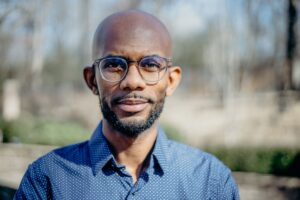 Eddie Cole: History offers important perspectives to answer the question of what is next for the United States, the field of higher education, and, specifically, higher education administrators. This is critical because many of the nation’s most pressing racial issues—affirmative action, housing discrimination, policing, public health inequities—have long been closely intertwined with higher education institutions. In turn, throughout history, college presidents have strategically, yet often silently, initiated and shaped racial policies and practices, both inside and outside of the educational sphere. The origins of gentrification today can be linked to academic leaders’ lobbying before Congress during the 1950s to secure federal funding that was used to displace thousands of Black households near campuses across the United States. By the early 1960s, college presidents also launched public relations campaigns that criminalized Black people as justification to expand their campus police departments. Later, several white academic leaders dismantled the original affirmative action programs that were geared toward Black colleges and universities. Therefore, instead of system-wide transformation, race-based admissions practices at a select number of white colleges and universities remain today. This is why the essential next step for the field is to embed a deeper understanding of history into practice to develop the critical perspective needed for self-reflection on the past to better forecast and dismantle racially unjust systems in higher education.
Eddie Cole: History offers important perspectives to answer the question of what is next for the United States, the field of higher education, and, specifically, higher education administrators. This is critical because many of the nation’s most pressing racial issues—affirmative action, housing discrimination, policing, public health inequities—have long been closely intertwined with higher education institutions. In turn, throughout history, college presidents have strategically, yet often silently, initiated and shaped racial policies and practices, both inside and outside of the educational sphere. The origins of gentrification today can be linked to academic leaders’ lobbying before Congress during the 1950s to secure federal funding that was used to displace thousands of Black households near campuses across the United States. By the early 1960s, college presidents also launched public relations campaigns that criminalized Black people as justification to expand their campus police departments. Later, several white academic leaders dismantled the original affirmative action programs that were geared toward Black colleges and universities. Therefore, instead of system-wide transformation, race-based admissions practices at a select number of white colleges and universities remain today. This is why the essential next step for the field is to embed a deeper understanding of history into practice to develop the critical perspective needed for self-reflection on the past to better forecast and dismantle racially unjust systems in higher education.
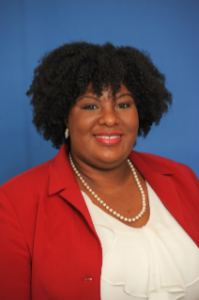 Felecia Commodore: Michelle Alexander describes American history as “a struggle between those who truly embraced the revolutionary idea of freedom, equality and justice for all, and those who resisted.” In this current moment, Alexander speaks to the core of America’s next era. Black people and allies, who are moving to manifest freedom, equality, and justice for all Black people are evaluating the country’s seriousness regarding dismantling racist structures and implementing an equitable redistribution of power. If not, we are not moving forward but remaining in a stagnant entanglement with anti-Blackness. Higher education is a microcosm of this. For the field to be inclusive, an agent of social mobility, transformative, and equity-centered, it must address and redress how it has provided access but systemically denied power to Black people and Black institutions. The field can decide to engage in substantive, structural, cultural change or accept superficial incremental change’s failures. If we take advantage of this moment and take seriously the praxis of dismantling systemic anti-Black racism perpetuated through institutions, the field is positioned to provide liberatory education. Higher education can be a place that speaks about change. To move into our next great era, we must be that of which we speak.
Felecia Commodore: Michelle Alexander describes American history as “a struggle between those who truly embraced the revolutionary idea of freedom, equality and justice for all, and those who resisted.” In this current moment, Alexander speaks to the core of America’s next era. Black people and allies, who are moving to manifest freedom, equality, and justice for all Black people are evaluating the country’s seriousness regarding dismantling racist structures and implementing an equitable redistribution of power. If not, we are not moving forward but remaining in a stagnant entanglement with anti-Blackness. Higher education is a microcosm of this. For the field to be inclusive, an agent of social mobility, transformative, and equity-centered, it must address and redress how it has provided access but systemically denied power to Black people and Black institutions. The field can decide to engage in substantive, structural, cultural change or accept superficial incremental change’s failures. If we take advantage of this moment and take seriously the praxis of dismantling systemic anti-Black racism perpetuated through institutions, the field is positioned to provide liberatory education. Higher education can be a place that speaks about change. To move into our next great era, we must be that of which we speak.
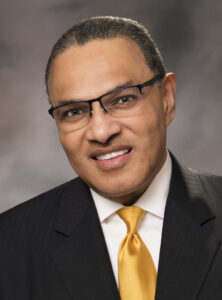
Freeman Hrabowski, III: We in higher education—leadership, staff, and faculty—must look in the mirror and be honest with ourselves about structural racism on our campuses and in society. On-campus, the hardest challenges we face are changing institutional culture and increasing the number of blacks and other persons of color in academic administration and the professoriate. To change culture, we must engage in deeper and difficult conversations about racial differences, implicit bias, and the work we must do to foster inclusion. To better attend to the needs of students of color on our campuses, we must also engage in a serious review of our curricula. Colleges and universities play a critical role as we strive to bridge divisions in our society. Again, we must look in the mirror, helping ourselves and our society acknowledge what we see. We must advocate for the use of evidence in both understanding society’s problems and formulating solutions. We should use faculty expertise and student interest on our campuses to engage more deeply with our local communities, joining in the work of addressing racial and ethnic achievement gaps, health disparities, environmental justice, economic inequality, and the flaws in our criminal justice system.
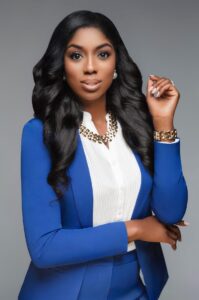 Wendy Osefo: As the dust settles from what feels like the end of a “civil war,” many of us can finally breathe a collective sigh of relief. While the term “war” may appear a bit heavy to some at first glance, for many people, including Immigrants, Women, People of Color, and countless other vulnerable populations, the last four years have been a constant reminder of what it feels like to have someone attack your very being. Your identity. Your genetics. Who would have thought that at the end of an election cycle, the country, and quite frankly, the world, would rejoice in unbelievable scenes of jubilation with the nomination of Joseph Robinnette Biden Jr. and Kamala Devi Harris. Here we are, “post-civil-war”—bloody, scared, and tired, yet, the truth is, we are in essence stronger than ever. As a nation, we often use the idioms, “We are better than this,” or “This is not who we are as a country;” the truth is, what we witnessed these past four years with the Trump Administration is EXACTLY who we are as a country and if we have any plans to change for the better, we must acknowledge our truth in order to heal, but also, to become a better nation of human beings. If our nation wants to become the superpower we purport ourselves to be, we must use these next four years to amplify the voices and needs of those who have been historically and systematically left out of the conversation. Institutions of higher learning must also use this time to rethink and reimagine the way in which we educate the next generation of leaders. We must shift our emphasis from diversity, and instead focus on inclusion. The goal is not to boast about how diverse our campuses are, but rather, how we as institutions ensure that those on our campus feel like they are in fact part of our campus community. If the 2020 election has taught us nothing else, let us always remember that as a country “The whole is greater than the sum of its parts” and together we will win.
Wendy Osefo: As the dust settles from what feels like the end of a “civil war,” many of us can finally breathe a collective sigh of relief. While the term “war” may appear a bit heavy to some at first glance, for many people, including Immigrants, Women, People of Color, and countless other vulnerable populations, the last four years have been a constant reminder of what it feels like to have someone attack your very being. Your identity. Your genetics. Who would have thought that at the end of an election cycle, the country, and quite frankly, the world, would rejoice in unbelievable scenes of jubilation with the nomination of Joseph Robinnette Biden Jr. and Kamala Devi Harris. Here we are, “post-civil-war”—bloody, scared, and tired, yet, the truth is, we are in essence stronger than ever. As a nation, we often use the idioms, “We are better than this,” or “This is not who we are as a country;” the truth is, what we witnessed these past four years with the Trump Administration is EXACTLY who we are as a country and if we have any plans to change for the better, we must acknowledge our truth in order to heal, but also, to become a better nation of human beings. If our nation wants to become the superpower we purport ourselves to be, we must use these next four years to amplify the voices and needs of those who have been historically and systematically left out of the conversation. Institutions of higher learning must also use this time to rethink and reimagine the way in which we educate the next generation of leaders. We must shift our emphasis from diversity, and instead focus on inclusion. The goal is not to boast about how diverse our campuses are, but rather, how we as institutions ensure that those on our campus feel like they are in fact part of our campus community. If the 2020 election has taught us nothing else, let us always remember that as a country “The whole is greater than the sum of its parts” and together we will win.
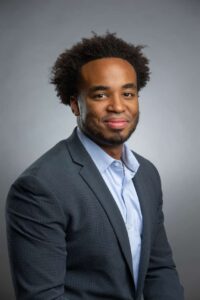 Antar Tichavakunda: In the words of Derrick Bell, “We are not saved.” In a like manner, higher education will not save us. After the countless statements pledging anti-racism, after the platitudes, and even after well-meaning, useful steps toward more equitable campuses and society, we are not saved. We must save ourselves. What, then, does saving ourselves look like? Saving ourselves can be exiting systems and institutions that continue to mistreat and underserve Black people. Saving ourselves can mean being intentional about being in community with other Black people. Saving ourselves, at the least, however, must mean letting go of the fiction that someone or something else—some university, some policy, some president, some research, some new position—will save us. We need to be real about higher education’s limited potential to serve the project of Black liberation. When we recognize where we stand in relation to the university, we can be more strategic about where we place our energy. So what is next for higher education? I do not know. Articulating what higher education should do next is useful and important. Yet, it is exceedingly important we understand that higher education will not move unless we, as a collective, force higher education to move. If higher education changes for the better, then it will be because of organizing and activism. We can and should partake in this. A first step, however, is being in community with others. We have to be real about the permanence of racism. Yet, being real about racism should not lead us into despair or pessimism. We should be hopeful. How could one witness the thousands in the streets and righteous anger during the racial uprisings of this summer and not be hopeful? To be clear, my hope is not in higher education. My hope resides in worn out soles double-dutching on pavement, in making jump shots on 11ft hoops, and lullabies to Black kids in one-bedroom apartments. My hope resides in the mundanity, beauty, and spirit of Black life persisting fully, creatively otherwise, and in spite of. My hope resides in the community, in Black people, and the collectives we create.
Antar Tichavakunda: In the words of Derrick Bell, “We are not saved.” In a like manner, higher education will not save us. After the countless statements pledging anti-racism, after the platitudes, and even after well-meaning, useful steps toward more equitable campuses and society, we are not saved. We must save ourselves. What, then, does saving ourselves look like? Saving ourselves can be exiting systems and institutions that continue to mistreat and underserve Black people. Saving ourselves can mean being intentional about being in community with other Black people. Saving ourselves, at the least, however, must mean letting go of the fiction that someone or something else—some university, some policy, some president, some research, some new position—will save us. We need to be real about higher education’s limited potential to serve the project of Black liberation. When we recognize where we stand in relation to the university, we can be more strategic about where we place our energy. So what is next for higher education? I do not know. Articulating what higher education should do next is useful and important. Yet, it is exceedingly important we understand that higher education will not move unless we, as a collective, force higher education to move. If higher education changes for the better, then it will be because of organizing and activism. We can and should partake in this. A first step, however, is being in community with others. We have to be real about the permanence of racism. Yet, being real about racism should not lead us into despair or pessimism. We should be hopeful. How could one witness the thousands in the streets and righteous anger during the racial uprisings of this summer and not be hopeful? To be clear, my hope is not in higher education. My hope resides in worn out soles double-dutching on pavement, in making jump shots on 11ft hoops, and lullabies to Black kids in one-bedroom apartments. My hope resides in the mundanity, beauty, and spirit of Black life persisting fully, creatively otherwise, and in spite of. My hope resides in the community, in Black people, and the collectives we create.
HIGHER ED CONVERSATIONS IN BLACK
Issue 02 | Edited by Kaylan Baxter, Zoë Corwin, Jordan Harper, Adrianna Kezar, and Aireale Joi Rodgers | Created by Jordan Harper
